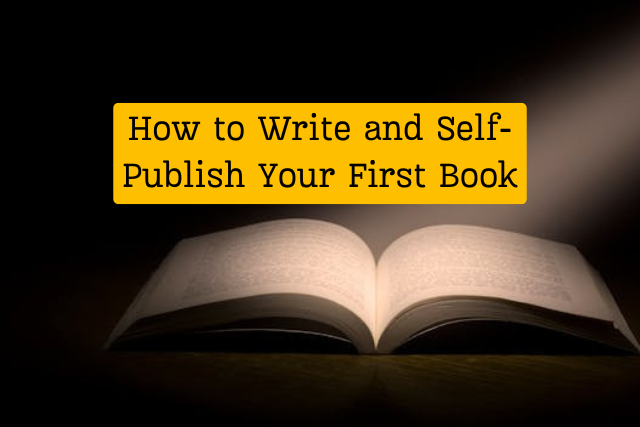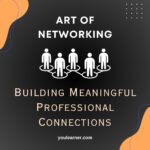Embarking on the journey of writing a book is one of the most fulfilling creative endeavors you can undertake. Whether you’re a first-time author with a burning story to share, a professional looking to establish your authority, or a blogger eager to turn your content into a published work, this guide is designed to walk you through every step of the process. From the initial spark of an idea to the moment your book is available for readers around the world, we will explore a proven roadmap that transforms a daunting project into a series of manageable tasks. This comprehensive guide—packed with practical tips, step-by-step instructions, and actionable insights—will empower you to write and self-publish your first book with confidence.
In the following sections, we will delve into essential topics such as brainstorming and idea development, turning raw words into a compelling narrative, structuring your content, and navigating the world of self-publishing with Amazon Kindle Direct Publishing (KDP). We’ll also cover manuscript formatting, book cover design, and effective marketing strategies to help your book find its audience. Whether you’re planning to write a memoir, a how-to guide, or a work of fiction, this guide provides everything you need to know to get started on your authorial journey.
1. Embracing the Journey: Overcoming Fear and Igniting Your Creativity
Before you put pen to paper—or fingers to keyboard—it’s essential to acknowledge and overcome the mental hurdles that often stand in the way of beginning a writing project. Many aspiring authors feel overwhelmed by the magnitude of writing a book. The idea of creating an entire manuscript can seem intimidating, but the truth is, every book starts with a single word. The key is to break the process into bite-sized steps and to view each step as a victory on the road to publication.
Acknowledge Your Fears
It’s natural to feel a mixture of excitement and fear when starting something new. Common fears include:
- Perfectionism: The belief that every sentence must be flawless from the start.
- Self-Doubt: Worrying that your ideas aren’t good enough.
- Overwhelm: Feeling daunted by the sheer volume of work required to complete a book.
Remember that writing is a process. No first draft is ever perfect, and every writer revises, rewrites, and refines their work. Embrace the idea that your initial efforts are simply the foundation upon which you will build something extraordinary.
Ignite Your Creativity
The journey begins by igniting your creative spark. Allow yourself the freedom to explore ideas without judgment. Here are a few techniques to jumpstart your creative process:
- Freewriting: Set a timer for 10 to 15 minutes and write continuously without worrying about grammar or coherence. Let your thoughts flow freely.
- Mind Mapping: Create a visual representation of your ideas. Write your main concept in the center of a page and branch out with related ideas, themes, or characters.
- Observation and Reflection: Spend time in nature or a quiet space, observe the world around you, and jot down any insights or ideas that come to mind.
By recognizing your fears and finding ways to spark your creativity, you set a positive tone for the writing journey ahead.
2. Brainstorming and Idea Development: Laying the Foundation
The first tangible step in writing your book is developing and organizing your ideas. This phase is crucial, as it forms the bedrock upon which your entire manuscript will be built. One effective method to capture your thoughts is the “word dump” technique—a simple yet powerful exercise to generate content and clear mental clutter.
The Word Dump Method
A word dump involves writing down every idea, word, phrase, or concept that comes to mind related to your book topic. Don’t worry about organization or coherence at this stage—focus solely on capturing your thoughts. Here’s how to do it:
- Set a Timer: Dedicate a set amount of time, such as 20 or 30 minutes, and commit to writing continuously during this period.
- Write Freely: Let your ideas flow without censoring or editing. Write down anything that comes to mind, even if it seems trivial or unrelated.
- Review and Highlight: Once the timer goes off, take a break, then return to your notes. Highlight recurring themes, interesting phrases, or unique ideas that resonate with you.
- Group Similar Ideas: Organize your word dump into clusters or themes. This grouping helps identify the core elements of your book.
This exercise not only helps you capture a wealth of ideas but also reduces the pressure to be “perfect” in your initial draft. It’s about creating a reservoir of raw material that you can later refine into coherent content.
Expanding on Your Ideas
After completing your word dump, the next step is to expand on your promising ideas. Choose a few key themes or topics from your word dump and explore them in greater depth:
- Ask Questions: For each idea, ask yourself what, why, how, and who. For example, if you’re writing a memoir, ask: What events shaped my life? Why did those events matter? How did they affect my growth? Who played pivotal roles in my journey?
- Create Outlines: Start drafting rough outlines for sections or chapters based on the clusters of ideas. This outline will serve as a roadmap for your manuscript.
- Engage in Dialogue: Sometimes discussing your ideas with a friend or mentor can provide fresh perspectives. Explaining your thoughts aloud may help you discover connections you hadn’t seen before.
By the end of this stage, you should have a well-organized collection of ideas and a rough outline that clearly defines the direction of your book.
3. Turning Words into Stories: Crafting Your Narrative
Once your ideas are clearly mapped out, the next phase is transforming raw thoughts into a narrative that engages and inspires your readers. This is where the magic of storytelling comes into play. Whether you’re writing fiction or non-fiction, your goal is to weave a compelling story that holds the reader’s interest from the first page to the last.
Developing Your Writing Style
Your writing style is your unique voice—a blend of tone, pace, and word choice that distinguishes your work from others. Here are some tips to help you develop and refine your style:
- Read Widely: Explore books in your genre and beyond. Notice how different authors convey emotions, build tension, and develop characters or arguments.
- Experiment: Write short pieces in various styles and tones. Don’t be afraid to experiment until you find the style that feels most authentic.
- Feedback: Share your writing with trusted friends or fellow writers. Constructive feedback can help you identify strengths and areas for improvement.
Crafting Vivid Sentences and Engaging Paragraphs
Effective storytelling is about more than just conveying information; it’s about creating vivid imagery and evoking emotion. Here are some strategies:
- Show, Don’t Tell: Instead of simply stating facts, use descriptive language to illustrate scenes and emotions. For example, rather than saying “she was sad,” describe her drooping shoulders, downcast eyes, and trembling lips.
- Vary Sentence Structure: Mix short, impactful sentences with longer, more descriptive ones to create rhythm and pace in your narrative.
- Use Dialogue: For fiction and memoirs, dialogue can bring characters to life and make your story more dynamic. Ensure your dialogue feels natural and contributes to character development.
Building Chapters and Scenes
As you turn your ideas into narrative form, consider how to structure your work into chapters and scenes:
- Chapter Breaks: Each chapter should serve a specific purpose in your story. Whether it’s introducing a new character, exploring a critical turning point, or developing a theme, chapter breaks provide natural pauses for your readers.
- Scene Transitions: Within each chapter, transition smoothly between scenes. Use transitional phrases or descriptive language to guide your reader through changes in time, location, or perspective.
- Pacing: Maintain a balance between action, reflection, and dialogue. Varying the pacing helps keep your readers engaged and prevents your narrative from feeling monotonous.
By focusing on the details of language, structure, and character development, you’ll create a narrative that not only communicates your ideas but also resonates emotionally with your readers.
4. Structuring and Outlining Your Book: Creating a Clear Roadmap
A well-structured book is like a well-planned journey—it guides your reader seamlessly from start to finish. Crafting an outline is one of the most critical steps in the writing process. It not only organizes your ideas but also helps you see the overall flow of your narrative.
The Importance of an Outline
An outline acts as a blueprint for your manuscript. It helps you:
- Maintain Focus: With a clear outline, you’re less likely to stray off-topic. Each section, chapter, or scene should tie back to the central theme of your book.
- Ensure Logical Flow: An outline helps you arrange your ideas in a sequence that makes sense, ensuring that your narrative builds naturally.
- Identify Gaps: By mapping out your content, you can easily spot areas that need further development or additional research.
Creating Your Outline
Here are steps to create an effective outline:
- Start with the Big Picture: Identify the main sections or parts of your book. For instance, if you’re writing a how-to guide, you might break it down into introduction, methodology, case studies, and conclusion.
- Break Down Each Section: Within each main section, list the chapters or key topics you want to cover. Be as detailed as possible—this is your roadmap.
- Sequence Your Chapters: Arrange the chapters in a logical order. Think about how each chapter leads into the next, building momentum and maintaining reader interest.
- Detail Chapter Elements: For each chapter, jot down key points, anecdotes, or examples you want to include. This detailed planning will make the actual writing process smoother and more focused.
- Be Flexible: Your outline isn’t set in stone. As you write, you may discover new ideas or realize that certain sections need rearrangement. Embrace this flexibility and update your outline as needed.
Chapter Titles and Subsections
A compelling title can pique a reader’s interest and offer a glimpse into what’s to come. When creating chapter titles, consider:
- Clarity: Ensure that the title clearly reflects the content of the chapter.
- Engagement: Use evocative language or intriguing questions that invite the reader to dive in.
- Consistency: Maintain a consistent tone and style across all chapter titles to provide a cohesive feel throughout your book.
Subsections within chapters can further break down complex ideas into digestible parts. Use headings and subheadings to guide the reader through your narrative, making it easier for them to follow your argument or story.
By taking the time to meticulously structure and outline your book, you set the stage for a coherent and engaging manuscript that will captivate your readers from beginning to end.
5. Crafting Your Manuscript: From Rough Draft to Polished Narrative
With a solid outline and a treasure trove of ideas, it’s time to start writing your manuscript. This stage is all about transforming your outline into a full-fledged narrative. While the first draft is often rough and unpolished, it’s an essential step in getting your ideas onto paper.
Writing Your First Draft
Here are some strategies to help you navigate the first draft:
- Set a Daily Word Count: Establish a realistic goal for how many words you can write each day. Consistency is key, and regular writing sessions help maintain momentum.
- Don’t Overthink It: The first draft is not the final version. Focus on getting your ideas down without worrying about perfection. You can refine and edit later.
- Write in Chunks: Break your writing sessions into manageable chunks. Work on one chapter or section at a time to avoid feeling overwhelmed.
- Stay Flexible: As you write, new ideas may emerge. Don’t be afraid to deviate from your outline if a better idea surfaces. You can always adjust your plan later.
Revising and Editing
Once your first draft is complete, the real work begins: revising and editing. This phase transforms your rough manuscript into a polished, coherent narrative.
- Take a Break: After completing your first draft, step away from your manuscript for a few days. This break will give you fresh perspective and help you spot areas that need improvement.
- Review Structure and Flow: Re-read your manuscript with a critical eye. Does the narrative flow logically? Are there sections that need reordering or additional detail?
- Focus on Clarity: Ensure that your language is clear and concise. Remove redundant phrases, clarify ambiguous statements, and refine your prose for maximum impact.
- Seek Feedback: Share your manuscript with trusted peers, writing groups, or professional editors. Constructive criticism can reveal blind spots and areas for enhancement.
Tools for Writing and Editing
In today’s digital age, numerous tools can help you streamline the writing and editing process:
- Word Processors: Applications like Microsoft Word, Google Docs, or Scrivener offer features like spell check, formatting options, and organization tools.
- Editing Software: Tools like Grammarly or ProWritingAid can help catch grammatical errors, suggest improvements, and enhance overall readability.
- Mind Mapping Software: Digital mind mapping tools can help you visually organize your ideas and restructure your outline as needed.
Remember, writing is a process of continuous improvement. The more you refine your manuscript, the closer you’ll get to producing a work that truly represents your vision and resonates with your readers.
6. Formatting Your Manuscript: Preparing for Publication
Once your manuscript is polished, the next critical step is formatting. Proper formatting is essential not only for readability but also for meeting the technical requirements of self-publishing platforms like Amazon Kindle Direct Publishing (KDP).
Understanding the Basics of Manuscript Formatting
Formatting involves adjusting your manuscript to ensure that it appears professional and is easy to read. Key aspects include:
- Font and Spacing: Use a clean, professional font such as Times New Roman, Arial, or Garamond, with a font size of 11 or 12 points. Ensure your manuscript is double-spaced to allow for easy editing and note-taking.
- Margins and Indentation: Standard margins (typically 1 inch on all sides) and proper paragraph indentation contribute to a clean, organized look.
- Chapter Headings: Use consistent heading styles for chapter titles and subheadings. This not only improves readability but also helps in creating a dynamic table of contents.
- Page Numbers and Headers/Footers: Add page numbers and consider including headers or footers with the book title or chapter name for a professional touch.
Tools and Templates for Formatting
There are many resources available to assist with formatting your manuscript:
- Formatting Software: Programs like Vellum or Reedsy can automatically format your manuscript according to industry standards.
- Templates: Many word processors offer free templates specifically designed for book manuscripts. These templates provide a solid foundation that you can customize to your needs.
- Online Guides: Numerous online resources provide step-by-step instructions on manuscript formatting. A quick search for “manuscript formatting guide” will yield a wealth of helpful tips and downloadable templates.
By ensuring your manuscript is properly formatted, you not only improve its visual appeal but also prepare it for smooth transition into the self-publishing phase.
7. Designing a Captivating Book Cover
In today’s competitive market, your book cover is often the first—and sometimes only—impression potential readers will have of your work. A captivating cover can significantly influence a reader’s decision to pick up your book.
The Importance of a Great Cover
Your book cover serves as a visual summary of your book’s content and tone. It should:
- Capture Attention: Use compelling images, fonts, and colors that grab the viewer’s eye.
- Reflect Your Genre: Ensure that the design aligns with the expectations of your target audience. For instance, a mystery novel might feature darker tones and bold typography, while a self-help book might use lighter, more uplifting imagery.
- Communicate Quality: A professional cover signals that your book is a polished, high-quality product worth reading.
Sources for Book Covers
If you’re not a graphic designer, there are plenty of resources available:
- Freelance Designers: Platforms such as Fiverr and Upwork offer access to professional designers who specialize in book covers.
- Design Tools: If you prefer a DIY approach, software like Adobe Spark, Canva, or GIMP provides templates and tools to create your own cover.
- Stock Images: Websites like Unsplash or Shutterstock offer high-quality images that can serve as the basis for your cover design. Ensure you have the appropriate rights or licenses to use any images in your final design.
Tips for a Successful Design Process
- Research Your Genre: Look at covers of successful books in your niche to understand common design elements and trends.
- Keep It Simple: Avoid overly complex designs. A clean, simple cover often has more impact than one cluttered with too many elements.
- Test Your Design: Get feedback from potential readers or peers. Sometimes a fresh pair of eyes can provide invaluable insights into what works and what doesn’t.
A well-designed cover not only enhances the aesthetic appeal of your book but also plays a crucial role in attracting your ideal readers.
8. Navigating the World of Self-Publishing: An Introduction to Amazon KDP
With your manuscript polished and formatted and your book cover designed, you’re ready to enter the exciting world of self-publishing. Amazon’s Kindle Direct Publishing (KDP) is one of the most popular platforms for independent authors, offering a streamlined process to publish your book and reach a global audience.
Why Choose Amazon KDP?
Amazon KDP offers several advantages for self-publishing authors:
- Global Reach: Your book becomes available to millions of readers around the world.
- Ease of Use: The platform guides you through each step—from uploading your manuscript to setting pricing and royalties.
- Control: You retain full creative control over your work, including pricing, marketing strategies, and rights.
- Speed: Once you upload your manuscript and cover, your book can be published within days, sometimes even hours.
Preparing for the Upload
Before you upload your book, ensure you have all necessary materials:
- Formatted Manuscript: Your manuscript should be in a supported file format (such as DOC, DOCX, or PDF) and properly formatted.
- High-Quality Cover: Save your cover design in a high-resolution format that meets KDP’s specifications.
- Book Description: Craft a compelling book description that will appear on your Amazon page. This should be engaging, clear, and informative, enticing potential readers to click “Buy.”
- Keywords and Categories: Choose relevant keywords and categories that will help readers find your book. Research similar titles to determine the best options.
The Upload Process
Here’s a step-by-step guide to uploading your book on Amazon KDP:
- Create an Account: If you don’t already have one, sign up for a KDP account.
- Start a New Title: Click on “Create a New Title” and choose between Kindle eBook or Paperback.
- Enter Book Details: Fill in your book title, subtitle (if applicable), author name, and book description. Select the appropriate categories and keywords.
- Upload Your Files: Upload your formatted manuscript and cover design. KDP will provide a preview so you can see how your book will appear on various devices.
- Set Pricing and Royalties: Decide on your book’s price and select your royalty option. Amazon offers various pricing strategies to maximize your earnings.
- Publish: Once you’re satisfied with your details and preview, click “Publish” to make your book live.
Post-Publication Considerations
After publishing your book, there are several important steps to maximize its success:
- Marketing: Develop a marketing plan that includes social media promotion, email newsletters, and collaborations with bloggers or influencers.
- Engagement: Encourage readers to leave reviews and feedback. Positive reviews can significantly boost your book’s visibility and credibility.
- Monitoring Performance: Keep track of your sales and adjust your strategies as needed. Amazon’s dashboard provides valuable insights into your book’s performance.
Amazon KDP democratizes the publishing process, giving every author the opportunity to share their story with a global audience. With the right preparation and marketing efforts, your book can achieve lasting success.
9. Marketing and Promotion: Getting Your Book in Front of Readers
Publishing your book is a major milestone, but the journey doesn’t end there. To ensure your book reaches its full potential, you need to invest time and effort into marketing and promotion. Effective promotion can help you build a reader base, generate buzz, and ultimately drive sales.
Developing a Marketing Plan
A well-crafted marketing plan outlines your strategy for promoting your book. Consider the following steps:
- Identify Your Target Audience: Who are the readers most likely to enjoy your book? Understanding your audience helps tailor your marketing efforts.
- Set Clear Goals: Determine what you want to achieve with your marketing efforts—whether it’s increasing sales, building an email list, or garnering reviews.
- Choose Marketing Channels: Identify the platforms that will best reach your audience. This might include social media, blogs, podcasts, or book clubs.
- Create a Content Calendar: Plan a schedule for promotional activities, such as book launch events, guest posts, or social media campaigns. Consistency is key to maintaining momentum.
Leveraging Social Media
Social media platforms are powerful tools for reaching readers and building your author brand. Here are some strategies:
- Build an Online Presence: Create dedicated author profiles on platforms like Twitter, Facebook, Instagram, or LinkedIn. Engage with your audience by sharing updates, behind-the-scenes content, and excerpts from your book.
- Join Communities: Participate in groups or forums related to your book’s genre. Engaging with these communities can help you establish credibility and connect with potential readers.
- Host Live Sessions: Consider hosting live Q&A sessions or webinars where you discuss your writing process and answer reader questions. Live interactions build a sense of community and trust.
Engaging with Readers
Your readers are your most valuable asset. Cultivate a relationship with them by:
- Encouraging Reviews: Politely ask readers to leave honest reviews on platforms like Amazon or Goodreads. Positive reviews can enhance your book’s credibility.
- Offering Incentives: Consider running contests, giveaways, or offering exclusive content to readers who subscribe to your newsletter.
- Staying Accessible: Respond to reader comments and questions. Engaging directly with your audience fosters loyalty and can turn casual readers into lifelong fans.
Utilizing Email Marketing
Email marketing is a direct way to reach your audience and keep them informed about your latest projects:
- Build a Mailing List: Encourage readers to subscribe to your newsletter by offering a freebie, such as a short story or a chapter preview.
- Send Regular Updates: Share news about upcoming releases, book signings, or special promotions. Keep your emails informative and engaging.
- Segment Your Audience: Tailor your messages to different segments of your audience based on their interests or past interactions. This targeted approach increases engagement and conversion rates.
Exploring Paid Advertising
While organic growth is essential, paid advertising can help accelerate your book’s exposure:
- Amazon Ads: Consider running Amazon’s sponsored ads to boost your book’s visibility within the platform.
- Social Media Ads: Platforms like Facebook and Instagram offer targeted advertising options that allow you to reach readers based on demographics, interests, and behaviors.
- Budget Wisely: Start with a modest budget, monitor the performance of your ads, and adjust your strategy as needed to ensure a good return on investment.
By developing a comprehensive marketing plan and engaging consistently with your audience, you can ensure that your book not only reaches but resonates with readers across the globe.
10. Leveraging Post-Publication Support and Continuous Improvement
The journey of writing and publishing your book doesn’t conclude with the “Publish” button. The post-publication phase is an opportunity to build on your initial success, gather feedback, and continue refining your craft. Continuous improvement and engagement with your readers are key to long-term success.
Collecting and Analyzing Feedback
Feedback from readers and reviewers is invaluable:
- Monitor Reviews: Regularly check reviews on Amazon, Goodreads, and other platforms. Pay attention to recurring themes or suggestions.
- Engage in Conversations: Participate in discussions on social media and author forums. Understanding your readers’ perspectives can provide insights into what worked well and what might need adjustment.
- Consider Revisions: If you receive consistent feedback regarding certain aspects of your book, consider updating future editions or incorporating the feedback into your next project.
Continuing Your Education as a Writer
The craft of writing is ever-evolving. To stay ahead, consider the following:
- Join Writing Groups: Local or online writing communities can provide ongoing support, critique, and inspiration.
- Attend Workshops: Writing workshops, conferences, and seminars are excellent opportunities to learn new techniques, network with fellow writers, and gain fresh perspectives.
- Read Widely: Continually reading books—both within and outside your genre—will broaden your horizons and improve your own writing style.
Expanding Your Author Brand
Building a strong author brand can open up new opportunities:
- Develop a Professional Website: A dedicated website allows you to showcase your work, share your writing journey, and connect with your readers.
- Blog Regularly: Sharing insights, behind-the-scenes looks at your writing process, or related topics can attract a loyal following.
- Network: Collaborate with other authors, attend book fairs, and engage with literary influencers. These relationships can lead to joint promotions, guest blogging opportunities, and broader exposure.
Planning Your Next Steps
Finally, as you reflect on your journey of writing and self-publishing your first book, consider planning your next steps:
- Set New Goals: Whether it’s writing a sequel, exploring a new genre, or improving your craft, having clear goals will keep you motivated.
- Celebrate Milestones: Recognize and celebrate your achievements—every review, every sale, every piece of positive feedback is a step forward.
- Stay Adaptable: The publishing industry is constantly evolving. Stay open to new trends, technologies, and strategies that can enhance your reach and impact.
By leveraging post-publication support and committing to continuous improvement, you ensure that your journey as an author is both rewarding and dynamic.
11. Who Can Benefit from This Journey?
Writing and self-publishing your first book isn’t just for a select few—it’s a journey that can transform lives across a wide range of fields and interests. Here’s a closer look at who can benefit most from this process:
Aspiring Authors
For those who have always dreamed of writing a book but never knew where to start, this process demystifies the entire journey. With clear, step-by-step guidance, even the most novice writers can overcome self-doubt and turn their ideas into a finished manuscript.
Entrepreneurs and Professionals
In today’s competitive market, establishing authority in your field can be a game-changer. Publishing a book can serve as a powerful marketing tool, showcasing your expertise, building trust with clients, and setting you apart from competitors.
Memoir Writers
Every life story is unique and worth sharing. Whether you’re documenting personal experiences or preserving family histories for future generations, writing a memoir provides a meaningful way to reflect on your life and inspire others.
Bloggers and Content Creators
If you’ve built a following through blogs, podcasts, or videos, transforming your content into a book can extend your reach and provide an additional revenue stream. Self-publishing allows you to monetize your knowledge while expanding your creative portfolio.
Educators and Coaches
For teachers, trainers, and mentors, packaging your knowledge into a guidebook or educational resource can amplify your impact. A published book not only serves as a testament to your expertise but also offers your audience a tangible resource they can reference for years to come.
12. Practical Exercises to Keep You on Track
To transform the theory into practice, here are some exercises designed to help you progress steadily through your writing journey:
The Daily Word Dump
Every day, set aside 15 to 20 minutes for a “word dump” session. Write without stopping, letting every thought and idea spill onto the page. Over time, you’ll accumulate a vast collection of raw material that you can refine and integrate into your manuscript.
Outlining Your Chapters
Take one chapter from your outline and expand it. List the key points you want to cover, the anecdotes you want to include, and any research or references you need. This detailed breakdown will make the writing process less intimidating and more structured.
Storytelling Exercises
Practice transforming a simple list of words into a short story. Choose a set of words from your word dump and challenge yourself to craft a coherent narrative around them. This exercise can help improve your descriptive skills and narrative flow.
Peer Feedback Sessions
Form or join a writing group where you can share excerpts of your work. Regular feedback from fellow writers can provide valuable insights, boost your confidence, and help you stay accountable to your writing goals.
13. Overcoming Common Challenges
Every writing journey comes with its set of challenges. Here are some common obstacles and practical strategies to overcome them:
Writer’s Block
Solution: When you’re stuck, try changing your environment or switching to a different writing exercise. Sometimes, a short walk or a new perspective can break the cycle of stagnation.
Procrastination
Solution: Establish a writing schedule and stick to it. Treat your writing time as an important appointment that cannot be missed. Use productivity techniques such as the Pomodoro Technique—writing for 25 minutes followed by a 5-minute break—to maintain focus.
Self-Doubt
Solution: Remember that every writer faces self-doubt. Celebrate small wins, remind yourself that the first draft doesn’t have to be perfect, and seek encouragement from supportive peers or mentors.
Technical Hurdles
Solution: Familiarize yourself with the tools you’re using for writing, formatting, and publishing. Don’t hesitate to invest time in learning new software or seeking help from online tutorials. The technical challenges are temporary, but mastering them will pay off in the long run.
14. Embracing the Transformation: Your Journey as an Author
The process of writing and self-publishing your first book is more than just a project—it’s a transformative journey that will change how you see yourself and your creative abilities. Each step, from the initial idea to the final published product, represents a milestone in your growth as a writer.
Personal Growth Through Writing
Writing a book forces you to explore your thoughts, confront your vulnerabilities, and articulate your experiences. This introspective process not only hones your writing skills but also deepens your understanding of yourself and your place in the world.
Building Confidence and Resilience
Every challenge you overcome in the writing process builds confidence. From beating writer’s block to receiving positive feedback from readers, each success reinforces your ability to turn ideas into reality.
Creating a Legacy
Publishing a book is an act of legacy. Your words have the power to inspire, educate, and entertain long after you’ve completed your manuscript. Whether it’s a personal memoir, a practical guide, or a captivating work of fiction, your book becomes a lasting testament to your creativity and hard work.
15. Final Thoughts: Taking the Leap and Sharing Your Story
The journey to writing and self-publishing your first book is both exhilarating and challenging. With careful planning, dedication, and the right tools, you can transform your ideas into a polished manuscript and bring your story to life. Remember, every great book started as a collection of ideas on a blank page. The key is to take that first step, trust the process, and keep moving forward, one word at a time.
By following this comprehensive guide, you’ve gained insight into the crucial steps of brainstorming, writing, structuring, formatting, and publishing your book. Now, it’s time to put pen to paper, embrace the process, and embark on your journey as an author. Your story matters, and the world is waiting to hear it.
Whether you’re an aspiring writer, an entrepreneur seeking to share your expertise, or a memoirist determined to document your experiences, the process outlined in this guide is designed to empower you. Take advantage of the practical exercises, leverage the available tools, and don’t be afraid to seek feedback along the way. Every challenge you encounter is an opportunity for growth, and every step forward is a testament to your commitment to your craft.
So, take a deep breath, open your notebook, and begin. Your first draft is waiting to be written, and your future as a published author is just a word away.
Conclusion
Writing and self-publishing your first book is a journey that requires passion, perseverance, and a willingness to learn. By breaking down the process into manageable steps—brainstorming ideas, crafting a narrative, outlining your chapters, refining your manuscript, and finally, publishing and marketing your book—you transform what might seem like an overwhelming task into a series of achievable milestones.
Remember, every author starts somewhere. With the practical advice and actionable strategies outlined in this guide, you are well-equipped to turn your ideas into a finished book. Embrace the journey, celebrate your progress, and never lose sight of the fact that your story is worth sharing. The world is eager to discover your unique voice, and with determination and hard work, you can make your mark as a published author.
Now is the time to take that leap. Write with passion, revise with care, and publish with pride. Your book is not just a product of your creativity—it’s a legacy that will inspire readers for years to come.
Happy writing, and here’s to the start of your authorial adventure!







